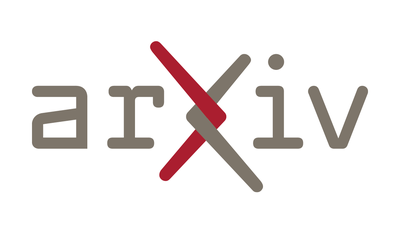
Continuous Deutsch Uncertainty Principle and Continuous Kraus Conjecture. (arXiv:2310.01450v1 [math.FA]) http://arxiv.org/abs/2310.01450
Enhancing Secrecy Capacity in PLS Communication with NORAN based on Pilot Information Codebooks. (arXiv:2310.01453v1 [eess.SP]) http://arxiv.org/abs/2310.01453
$m$-Magic Labeling on Anti Fuzzy Path Graph. (arXiv:2310.01462v1 [math.GM]) http://arxiv.org/abs/2310.01462
Analytic solutions for irregular diffusion equations with concentration dependent diffusion coefficients. (arXiv:2310.01466v1 [cond-mat.stat-mech]) http://arxiv.org/abs/2310.01466
Vector Space Integration for Dark Matter Scattering. (arXiv:2310.01480v1 [hep-ph]) http://arxiv.org/abs/2310.01480
Wavelet-Harmonic Integration Methods. (arXiv:2310.01483v1 [hep-ph]) http://arxiv.org/abs/2310.01483
Complexity in Tame Quantum Theories. (arXiv:2310.01484v1 [hep-th]) http://arxiv.org/abs/2310.01484
Moore-Tachikawa Varieties: Beyond Duality. (arXiv:2310.01489v1 [hep-th]) http://arxiv.org/abs/2310.01489
Partial groups as symmetric simplicial sets. (arXiv:2310.01513v1 [math.GR]) http://arxiv.org/abs/2310.01513
Artin approximation for left-right equivalence of map-germs and for quivers of map-germs. (arXiv:2310.01521v1 [math.AG]) http://arxiv.org/abs/2310.01521
Derivation of a 2D PCCU-AENO method for nonconservative problems. Theory, Method and theoretical arguments. (arXiv:2310.00003v1 [math.NA]) http://arxiv.org/abs/2310.00003
Operator-free Equilibrium on the Sphere. (arXiv:2310.00012v1 [math.NA]) http://arxiv.org/abs/2310.00012
Semantic Communication with Probability Graph: A Joint Communication and Computation Design. (arXiv:2310.00015v1 [cs.IT]) http://arxiv.org/abs/2310.00015
The extension problem for fractional powers of higher order of some evolutive operators. (arXiv:2310.00025v1 [math.AP]) http://arxiv.org/abs/2310.00025
Machine Learning Clifford invariants of ADE Coxeter elements. (arXiv:2310.00041v1 [cs.LG]) http://arxiv.org/abs/2310.00041
On Phases of Unique Sink Orientations. (arXiv:2310.00064v1 [math.CO]) http://arxiv.org/abs/2310.00064
ShOpt.jl: A Julia Package for Empirical Point Spread Function Characterization of JWST NIRCam Data. (arXiv:2310.00071v1 [astro-ph.IM]) http://arxiv.org/abs/2310.00071
Computing critical angles between two convex cones. (arXiv:2310.00081v1 [math.OC]) http://arxiv.org/abs/2310.00081
On the Counting of Involutory MDS Matrices. (arXiv:2310.00090v1 [cs.CR]) http://arxiv.org/abs/2310.00090
Pointwise uncertainty quantification for sparse variational Gaussian process regression with a Brownian motion prior. (arXiv:2310.00097v1 [math.ST]) http://arxiv.org/abs/2310.00097
I post the feed of the arXiv Mathematics.




















